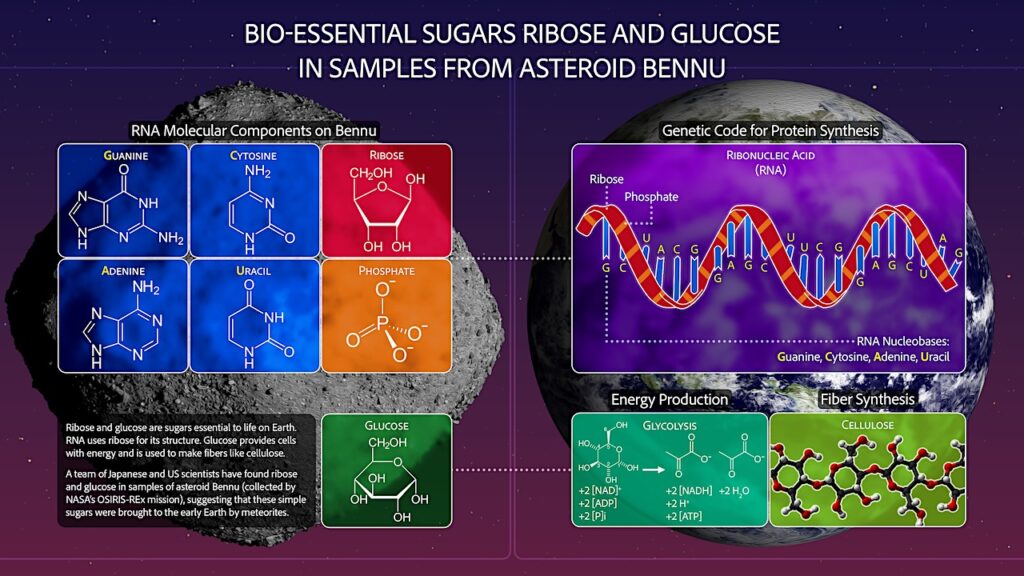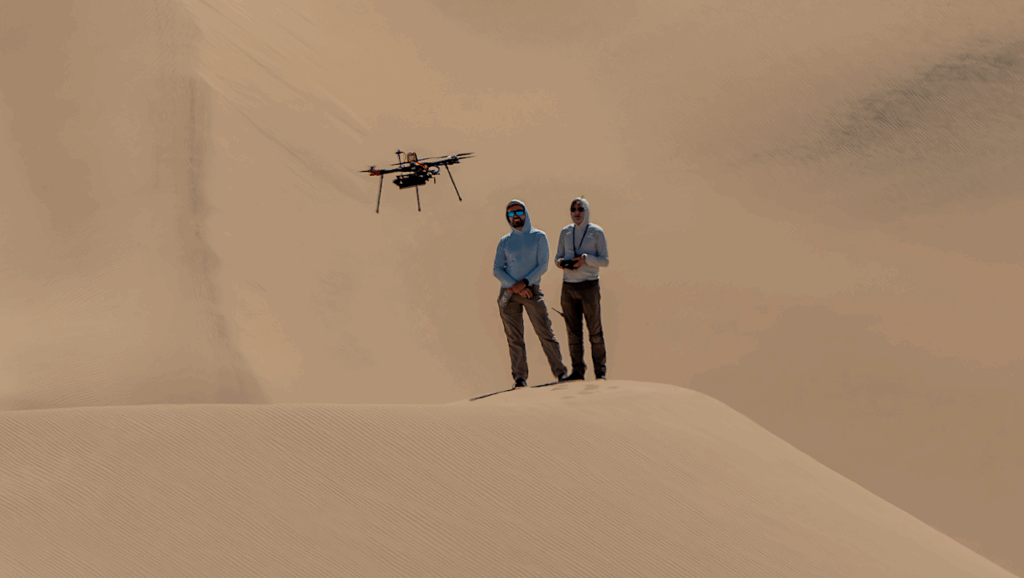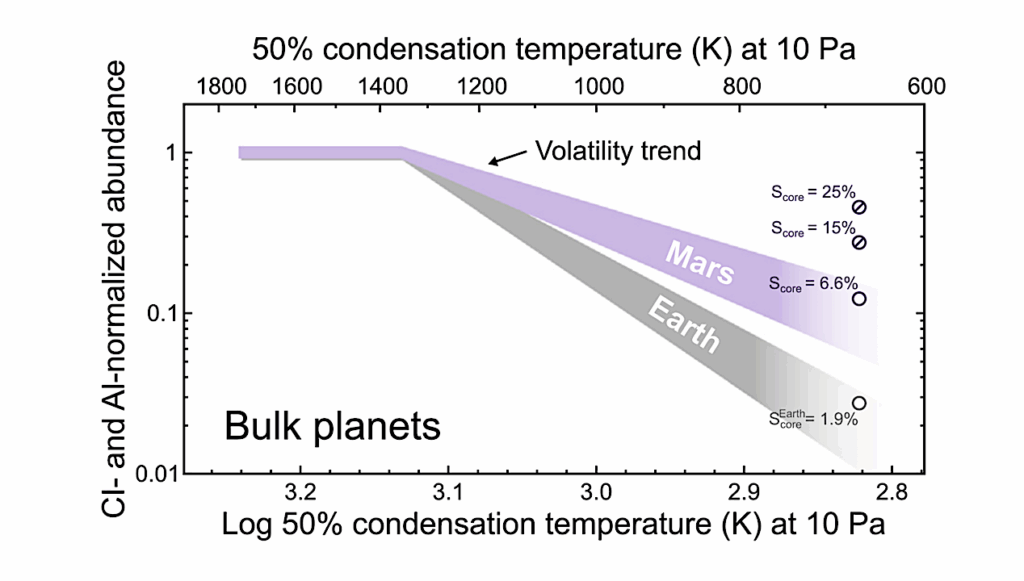Away Teams On Ocean Worlds: Deep Sea Research Oriented By Deep Sea Tech Development

The deep sea has been documented as the largest biome on earth. Typical deep-sea ecosystems such as hydrothermal vents, cold seeps, seamounts, oceanic trenches, and whale falls, shattering the early understanding of the deep sea as a “no-go area” for life.
However, the difficulty of deep-sea access, limited by the technology of deep-sea equipment, has limited human insight into the unique environment characterized by high pressure, high/low temperature, limited light, and nutrient scarcity in the deep sea. So far, less than 1 ‱ of the whole deep-sea ecosystem has been visually observed or physically sampled. In-depth understandings of biodiversity, function, and service of the deep-sea ecosystem, and the impact by anthropologic activity are far from well known. Thus, it is critical to developing technologies that can obtain deep-sea organisms, ecosystem development, and interactions with environmental changes.
This study is led by Prof. Si Zhang (Southern Marine Science and Engineering Guangdong Laboratory (Guangzhou), China). A bibliometric analysis over the past five decades showed that there was a strong interrelation between the types of deep-sea equipment and the research hotspot of the deep-sea organisms. Recently, the research of deep-sea organisms is gradually shifting from identifying species and environmental characteristics to exploring ecosystems and connectivity.
Research achievements are closely in line with the developing technologies. Deep-sea submersibles, microbial bioreactors, seafloor observatory, and molecular biology methods have promoted the discovery of new species in the deep sea, bringing new opportunities to study the adaptability of deep-sea organisms to extreme environments, as well as biological connectivity.
These technologies can assist in achieving the controlled culture of deep-sea organisms with specific ecological service functions, providing a new window for exploiting high-value deep-sea biological resources.
Innovating deep-sea equipment performance is essential to break through the bottleneck of deep-sea organism research. In the future, advanced and specialized equipment that meets the requirements of deep-sea organism research must be developed for exploring, surveying, observing, sampling, experimenting, and conducting models in the deep-sea floor environment.
Different perspectives of research on the biology of deep pelagic and benthic ecosystems should be considered as well.The main areas of innovation are as follows:
- Improving the ability to explore deeper, wider, and longer-term deep-sea ecosystems
- Developing large-scale in-situ conditions-retaining simulators
- Enhancing the self-adaption ability of the deep-sea environment
The research team is working on building a long-term underwater laboratory that can carry three scientists and multiple devices into the deep-sea cold seep ecosystem for long periods of time to conduct multiple in-situ experiments and long-term investigations. Also, the team is building a long-period and large-scale simulator to create an artificial ecosystem of deep-sea cold seep.
Deep-sea organisms research oriented by deep-sea technologies development, Science Bulletin
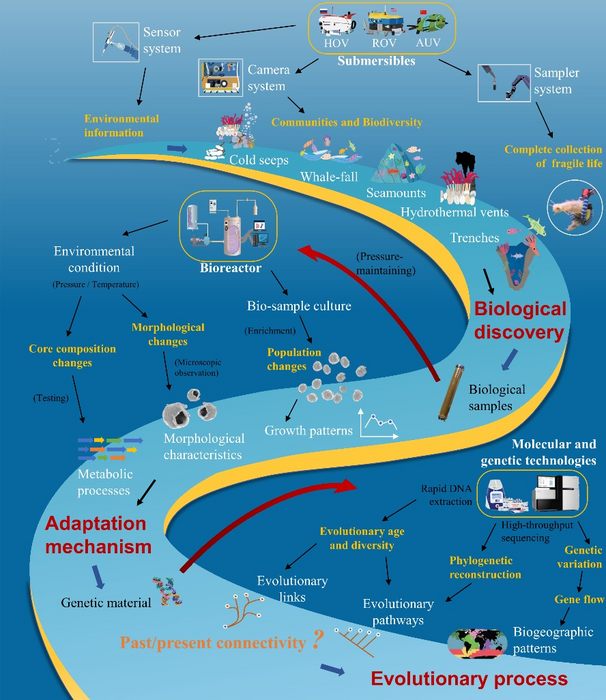
Research achievements of biological discovery, adaptation mechanism, and evolutionary process are closely in line with the developing technologies of submersibles, bioreactors and molecular biological technologies. CREDIT ©Science China Press
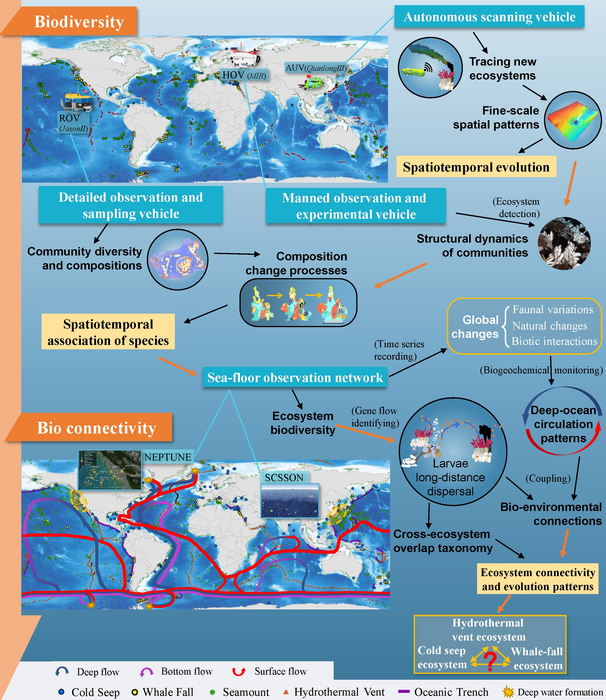
The observation technology continues to mature and improve, and its effective methods for investigating the biodiversity of deep-sea organisms have been systematically applied in a comprehensive manner. In order to fully understand the changes and connectivity between ecosystems, it is a better choice to establish a long-term continuous observatory. CREDIT ©Science China Press
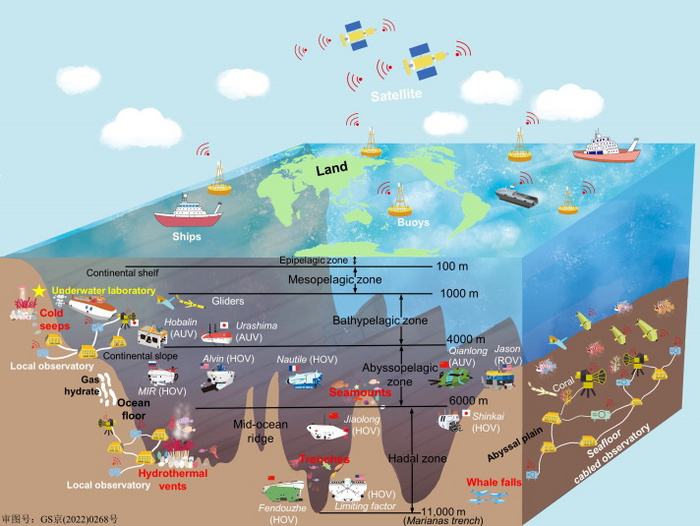
The working range of the serving submersibles is developing toward deeper and wider. The research team is working on building a long-term underwater laboratory that can carry three scientists and multiple devices into the deep-sea cold seep ecosystem for long periods of time to conduct multiple in-situ experiments and long-term investigations (marked with a golden star). CREDIT ©Science China Press.
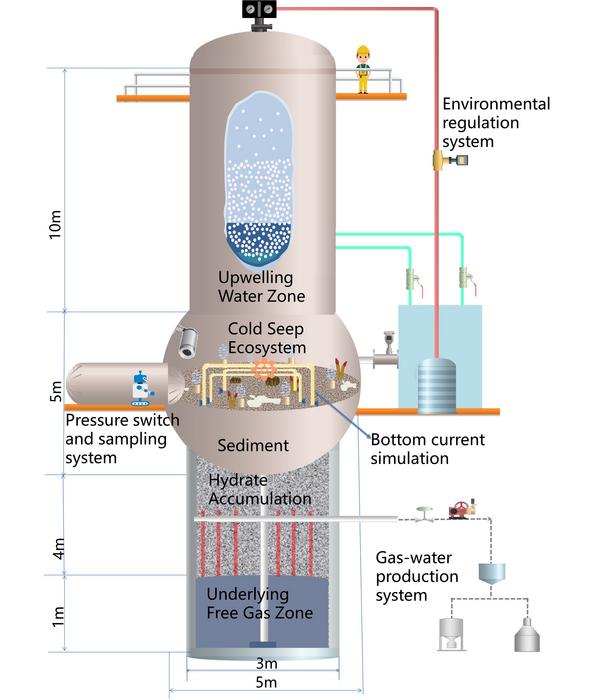
The team is building a long-period and large-scale simulator to create an artificial ecosystem of deep-sea cold seep. CREDIT ©Science China Press
Astrobiology, oceanography,


